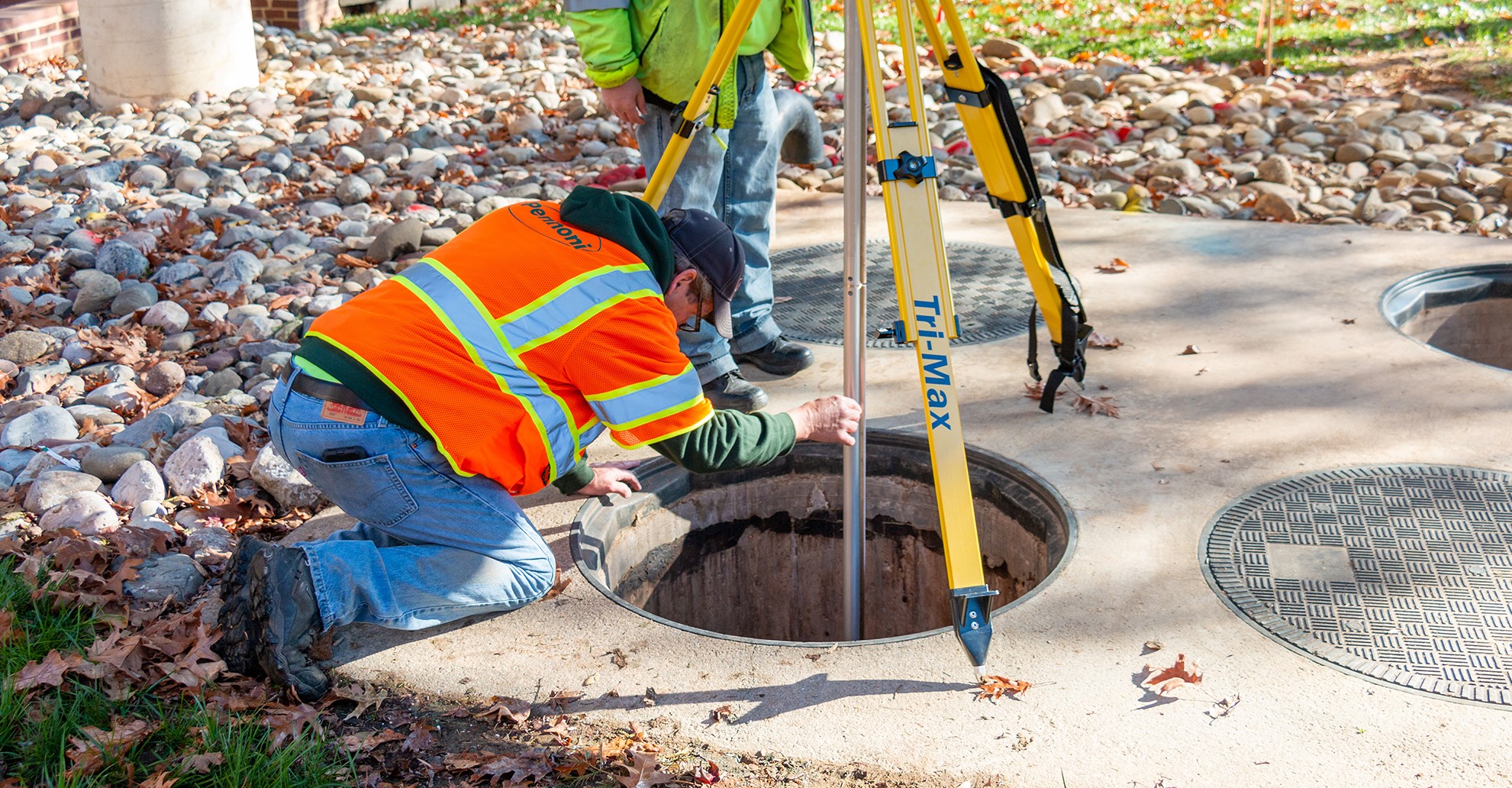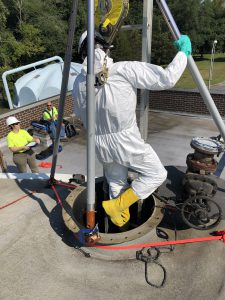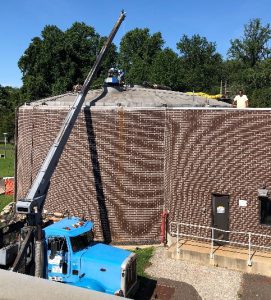
Permit required confined spaces are dangerous places. OSHA has established rules to confront the hazards associated with these spaces. According to OSHA, a confined space meets all three of the following conditions: it has a limited means of entry and egress, large enough for bodily entry, and not designed for continuous occupancy. A permitting process is deemed necessary when the space has some type of serious health and safety hazard that could trap, kill, or incapacitate the entrant. Some specific examples can include hazardous atmospheres (e.g. sewer gas in a manhole), materials that can engulf the entrant (e.g. grain in a silo), and an internal configuration trap or asphyxiate an entrant (e.g. the sloping walls of a hopper or process vessel). Complying with these rules can be tricky and it can be hard to know how to safely perform confined space work.
 Routinely, land surveyors are asked to complete inspections of confined spaces accessible through manholes, such as steam vaults and sewer pipes. Traditionally, this involved a surveyor climbing into the manhole and positioning the survey rod while another technician collects and records measurements. Many manholes contain dangerous hazards such as low levels of oxygen or high levels of a toxic gas.
Routinely, land surveyors are asked to complete inspections of confined spaces accessible through manholes, such as steam vaults and sewer pipes. Traditionally, this involved a surveyor climbing into the manhole and positioning the survey rod while another technician collects and records measurements. Many manholes contain dangerous hazards such as low levels of oxygen or high levels of a toxic gas.
At Pennoni, our land surveyors have found a solution to inspect manholes without ever having to enter the space. This method means there’s no need to worry about putting someone in a hazardous confined space. High Definition Laser Scanner (HDLS) equipment can locate up to 4 million points every second, in all directions, generating a full three-dimensional point map or “point cloud” of everything around it within range. By utilizing a specialized tripod, we invert the HDLS equipment and lower it into an open manhole or underground structure and gather the three-dimensional data points. The HDLS equipment is controlled by an operator from a tablet at a safe position.
We recently performed HDLS inspections of the interiors of underground steam structures for a local university without the need for confined space entry, while gaining full 3D point cloud information and complete HDR photography. These scans were registered together with surface information, and then processed into BIM models in Revit. One scan, from setup to tear down can be performed in approximately 6 minutes. This HDLS solution helps Pennoni meet the cardinal rule of confined space entry: don’t go in unless you need to.

The no entry solution isn’t viable for every project. We recently completed confined space entries to inspect four sludge processing tanks’ interior concrete and steel surfaces at the Cumberland County Utilities Authority (CCUA) in New Jersey. The process tanks are 20 to 35-foot deep tanks with domed roof covers and sloped cone bottom floors. The only entrance to the tank is through manways located in the roof cover. Entering these confined spaces requires a permit based on the tank’s configuration and the potential for hazardous atmosphere accumulation.
These tanks presented unique challenges for safe entry and rescue. Prior to the inspections, Pennoni confirmed that the roof hatches’ large diameters, proximity to building edges, and the roof curvature negated the use of a conventional tri-pod retrieval device. We contacted Med-Tex Services of Philadelphia to provide a specialized high directional anchor retrieval tripod that was designed to handle horizonal loads without displacement during use.
Ideally, entry into permit required confined spaces should be avoided. Our land surveyors found a great solution to gather better data, faster, and without placing our staff in a potentially hazardous environment. If entry is necessary, it’s important to take the proper precautions and be able to act quickly in the event something goes wrong. For CCUA, Pennoni achieved this by teaming up with site representatives and rescue specialist Med-Tex Services Inc to have a textbook confined space entry.
For more information, please contact the following:
Safety questions: Kate McGee, CMcGee@Pennoni.com
HDLS survey: Jason Haynes, JHaynes@Pennoni.com
Cumberland County project questions: Tim Daily, TDaily@Pennoni.com